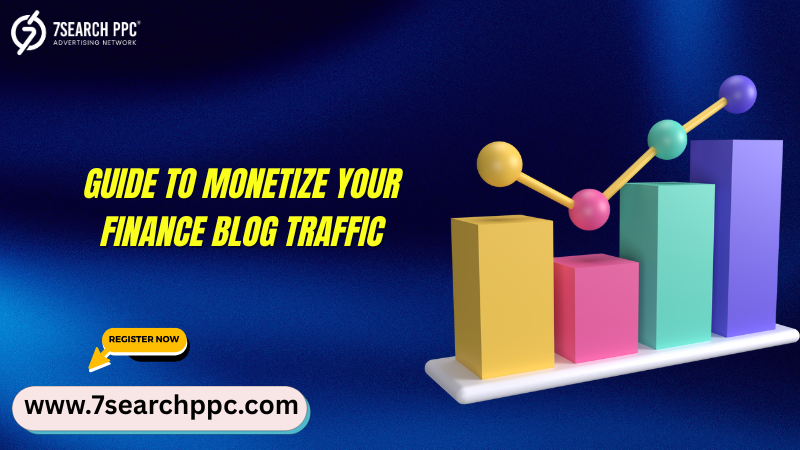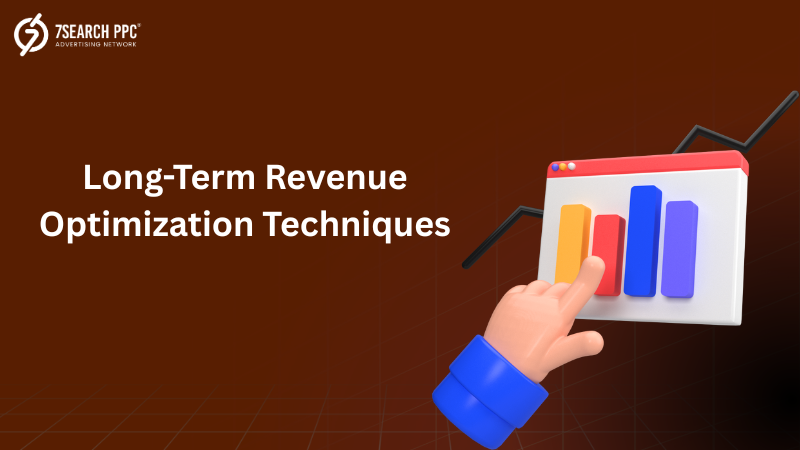Every day, finance bloggers create compelling content to educate audiences on savings, investments, debt management, and market trends. But despite high-quality posts and consistent traffic, many bloggers struggle to convert their readership into revenue. Monetizing your finance blog isn't just about throwing up some ads or affiliate links — it's about building an intelligent ecosystem that aligns with user intent, financial goals, and scalable monetization strategies.

Why Monetizing a Finance Blog Requires a Different Approach
Unlike lifestyle or fashion blogging, finance blogging caters to a niche with high stakes, high trust, and high regulatory boundaries. Your audience is often looking for financial advice, investment options, or ways to improve their financial literacy. That makes it essential to build credibility while choosing monetization models that resonate with this specific intent.
Moreover, finance blogs attract advertisers from banking, insurance, fintech, and wealth management sectors — some of the most competitive digital ad verticals. This competition is your opportunity to build robust finance content revenue.
Understanding the Foundations of Blog Monetization in Finance
Before jumping into methods, it's crucial to lay the foundation for monetization.
Building Traffic That Converts
Not all traffic is equal. Search-based traffic (SEO), particularly from financial keywords, tends to convert better than social traffic because the user has a defined intent. Building keyword-rich content around finance topics like credit scores, tax saving tips, or investment comparisons can significantly increase your value to advertisers and affiliate partners.
Trust and Transparency
In the financial space, users are cautious. They won’t click random ads or sign up for unknown services. Use clear disclaimers, cite credible sources, and ensure your CTAs (calls to action) add value rather than feel like a sell.
Tracking and Analytics
Implement Google Analytics and behavior tracking tools to monitor how users interact with your blog. Knowing which articles generate the most traffic and engagement can help you focus monetization efforts more precisely.
Top Strategies to Monetize Your Finance Blog
Let’s explore different monetization techniques that have worked exceptionally well for finance bloggers.
Display Advertising for Passive Revenue
Display advertising is often the first step for bloggers. However, finance blogs perform better with high-quality ad networks tailored to financial products rather than generic platforms.
Using a finance traffic monetization network such as specialized finance ad networks or PPC platforms allows you to tap into higher-paying ads targeted to your niche. Choose networks that align with your content — for example, platforms that serve ads for credit cards, investment tools, or banking solutions.
Avoid networks that flood your blog with irrelevant banners; not only do they reduce trust, but they also lower your earnings per thousand impressions (eCPM).
Affiliate Marketing with Financial Tools
Financial affiliate marketing offers one of the highest revenue potentials in the blogging world. Finance products often have high lifetime values (LTV), and companies are willing to pay large commissions for leads and signups.
You can promote:
Budgeting software
Stock trading platforms
Insurance comparison tools
Credit card sign-up bonuses
Robo-advisors and digital banks
Ensure your affiliate offers are transparent, and that you provide in-depth reviews, comparison charts, or case studies that enhance user trust.
This is a top strategy for earning with Finance blogs, especially when the affiliate programs offer recurring commissions.
Selling Digital Products and Courses
If you have strong expertise in a particular financial field, consider offering:
eBooks on investment strategies
Excel budgeting templates
Online workshops on tax-saving tips
Courses on personal finance planning
Selling digital products increases your finance content revenue with no third-party middlemen taking a cut. It also strengthens your brand as an authority.
Email List Monetization
Many finance bloggers underutilize email marketing. Building an email list through gated content, newsletters, or lead magnets can turn casual readers into long-term followers.
Once you’ve built a targeted email list, monetize it by:
Promoting your own products
Sharing exclusive affiliate offers
Running sponsored emails from finance brands
Launching premium newsletter subscriptions
A well-segmented list also helps you understand which readers are interested in which type of financial content — giving you the chance to create tailored monetization funnels.
Unlocking the Right Channel for Monetization
The success of any monetization effort depends on using the right channel. Many publishers get stuck because they either over-rely on one income source or use outdated monetization networks that aren’t finance-specific.
Opting for a channel that aligns with both user behavior and advertiser demand can accelerate your revenue growth.
One such trusted solution is 7SearchPPC — a performance-driven platform that specializes in niche monetization, especially in sectors like finance. It helps publishers earn more from their finance-related traffic by serving contextual, relevant, and conversion-oriented ads.
With 7SearchPPC, publishers can benefit from:
High-converting financial ad offers
Seamless integration with blogs or landing pages
Real-time analytics and campaign control
Payout models that prioritize transparency and consistency
This is an ideal channel to amplify your finance site monetization without cluttering the user experience. It combines the reach of a powerful ad network with the precision needed for financial content.
>>>Start Monetizing Your Traffic with High-Paying Ads Today<<<
Diversifying Revenue Streams Without Losing Focus
No successful finance blog depends on just one income stream. But diversification must be strategic. Here are options to layer your monetization:
Podcast Sponsorships: Create weekly audio content and invite financial brands as sponsors.
Freelance Services: Offer your expertise in financial writing or consulting.
Syndicated Content: License your finance articles to other platforms or financial publications.
Membership Communities: Create a paid community around investment discussions, financial planning, or exclusive insights.
Balance these opportunities with the user experience. Don’t overcrowd your blog with pop-ups or multiple CTAs. Instead, match each monetization method with a content type.
Long-Term Revenue Optimization Techniques
To build consistent finance content revenue, focus on these optimization tips:
SEO-First Approach: Target keywords with commercial intent such as “best retirement plans 2025” or “low-interest credit cards.”
Content Upgrades: Refresh old content with new stats and offers to boost SEO and engagement.
Split Testing: Test multiple CTAs, ad placements, and landing pages to find the best-performing setup.
Monetization Heatmaps: Use tools like Hotjar or Crazy Egg to analyze which sections of your blog get the most attention and clicks.
By continuously testing and optimizing your approach, you position your finance blog for steady and scalable growth.

Building a Brand to Attract Premium Advertisers
Monetizing a finance blog is much easier when you’re seen as an authority. Brands are more likely to partner, sponsor, or advertise on your site if they see quality and credibility.
Here’s how to build that:
Use Expert Contributions: Collaborate with financial advisors or economists.
Cite Reputable Data: Refer to stats from official sources like World Bank, RBI, or SEC.
Build a Unique Voice: Don’t copy others. Offer original perspectives.
Invest in Branding: Get a logo, uniform blog formatting, and a cohesive content strategy.
A strong brand helps you command higher affiliate commissions, better ad rates, and premium collaborations — essential for long-term finance site monetization.
Conclusion
Running a finance blog gives you access to one of the most lucrative niches in digital publishing. But turning that influence into revenue requires more than just good writing. You need a structured, tested, and scalable monetization strategy that aligns with user needs, SEO, ad quality, and trust.
By implementing smart techniques — from contextual ad platforms to premium affiliate partnerships — you’ll not only monetize your finance blog effectively but also set the foundation for a thriving business.

Write a comment ...